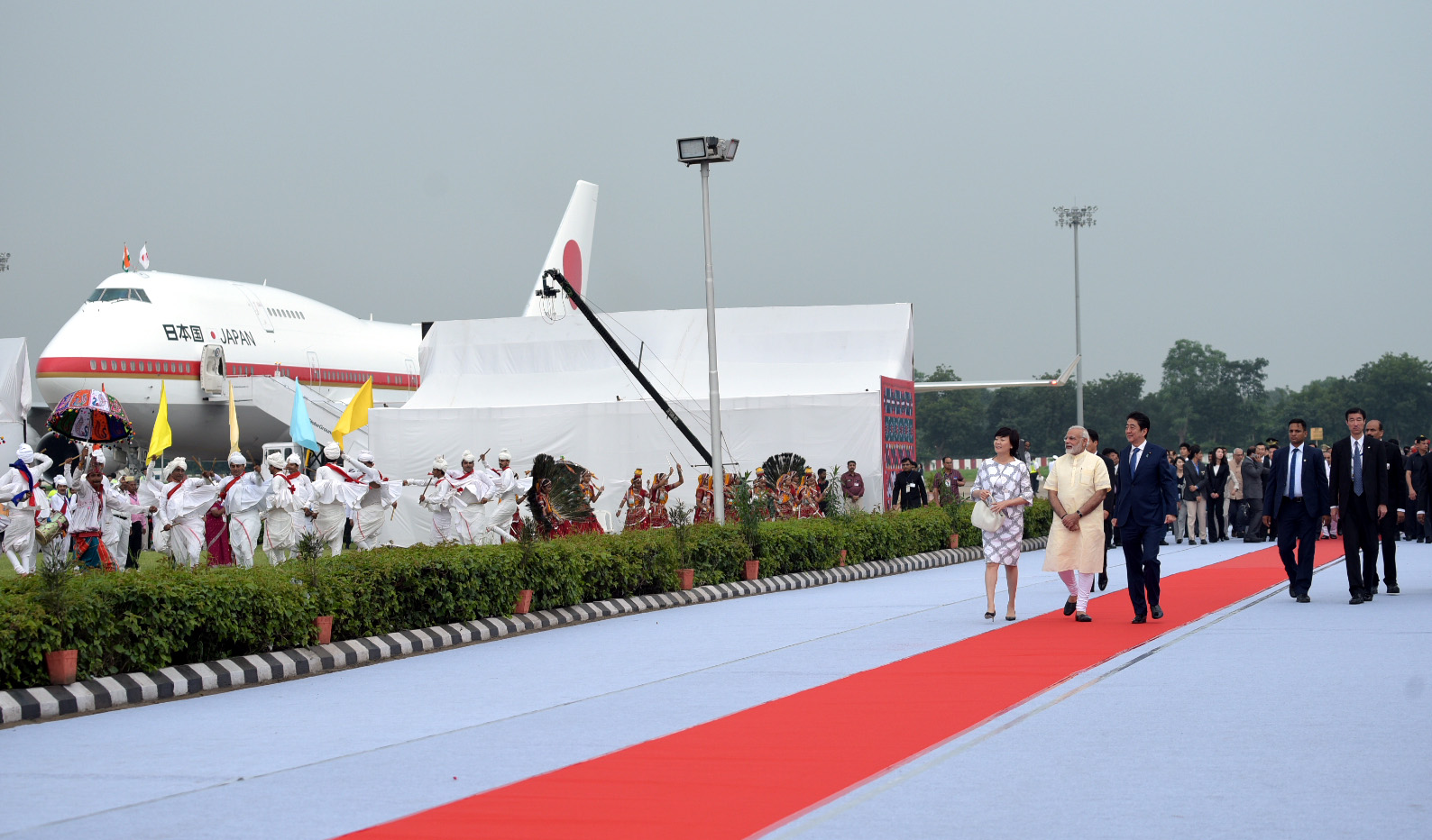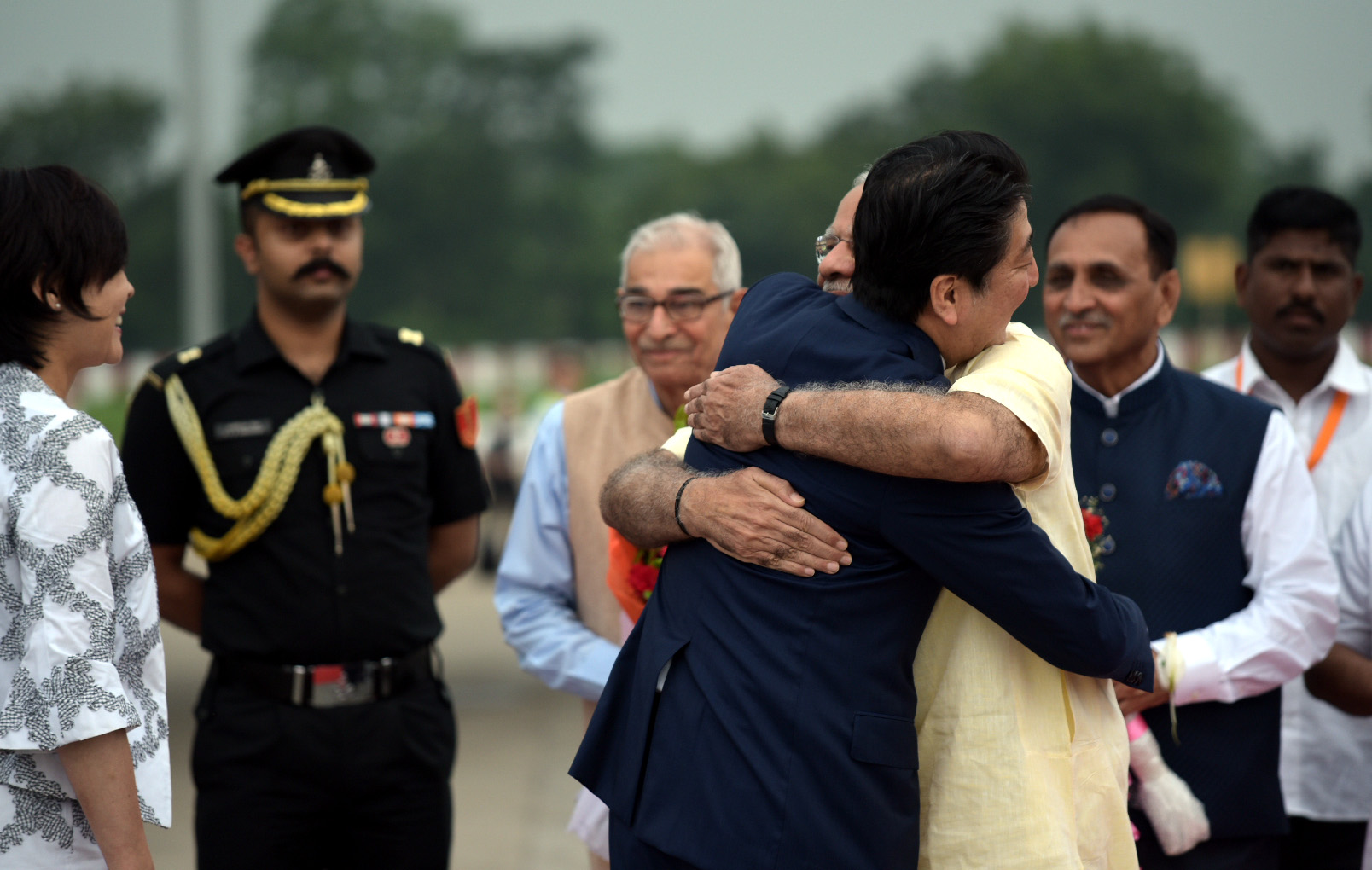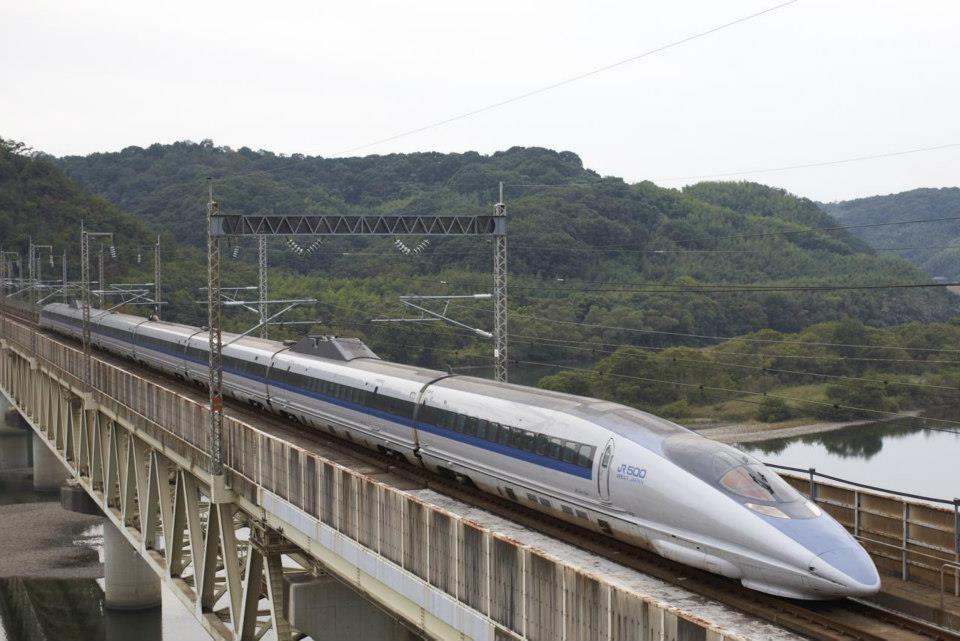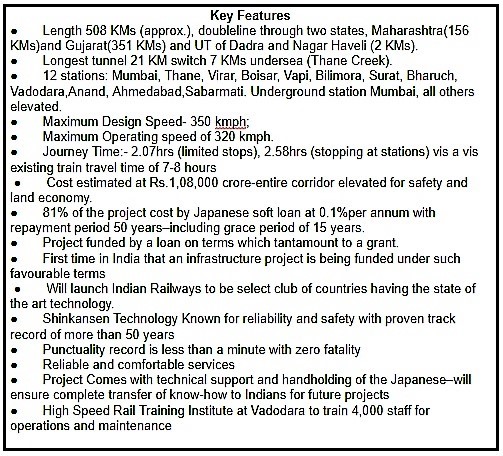Close on the heels of Indian Railways announcing sops for foreign tourists, NRIs and global Indians, Japanese Prime Minister Shinzo Abe and Indian Prime Minister Narendra Modi kick started the work on India's first bullet train today in Gujarat by laying the foundation stone.
Briefing media persons ahead of the ceremony, Railways Minister Piyush Goyal clarified that there will be no special fare for the bullet train that will run between Mumbai and Ahmedabad. It will be less than that of a flight and comparable to the fare of AC 2-tier of Rajdhani Express.
"We have to be competitive. We will certainly keep it affordable. If a passenger pays less for a flight ticket, why they would travel by the bullet train?" Goyal said.
Describing the project, the minister said the groundbreaking ceremony shall be held in the presence of Prime Ministers the two countries.
"New Shinkansen Technology by the Japanese shall ensure more growth opportunities. The cost will go down further as the technology will grow massively and it will be developed under Make in India. The financial assistance given by Japan is at a minimal interest and will not be a burden as it will be paid after 50 years at a minimal interest," Goyal said.
Meanwhile, in a statement released today ahead of the ceremony in Ahmedabad, Prime Minster Abe said, "Economic cooperation is a cornerstone of the relationship between Japan and India."
"In November last year, I accompanied Prime Minister Modi on a Japanese Shinkansen rolling stock factory and introduced him to ingenious technology that Japan boasts to the world. It gives me a great joy to know that those Shinkansen trains will operate on Indian soil under the Mumbai-Ahmedabad High-Speed Rail project. The economy of India is currently achieving rapid growth. Japan possesses outstanding technology for creating railways that are safe punctual and high speed," Abe said.
Known as the Ahmedabad-Mumbai bullet train, this Mumbai–Ahmedabad High Speed Rail (MAHSR) project has heralded new benchmarks in terms of scale, speed and safety.
The Government of Japan will provide a soft loan of about INR88,000 crore at a miniscule interest rate of 0.1%. The repayment period of the loan is 50 years.
As per the agreement between Governments, the MAHSR Project has “Make in India” and “Transfer of technology” objectives.
Active interactions are already taking place between the industries of India and Japan. It is expected that many joint ventures will be formed in the time to come to take up manufacturing of various components including rolling stock. This will not only benefit the Indian Industry with new technology but will also create several job opportunities within the country. The Make in India objective will also ensure that most of the amount invested in this project would be spent and utilized within India.
The construction sector in India will also get a big boost not only in terms of investment but also with respect to new technology and work culture. This project is likely to generate employment for about 20,000 workers during the construction phase, who will be trained specially to take up construction of such projects in India. Some of the new areas where construction skills would be developed are ballast-less track, under-sea tunnel, etc.
A dedicated High-Speed Rail Training Institute is being developed at Vadodara. This institute will be fully equipped with equipment and facilities such as simulator etc. as are existing in the training institute in Japan.
Salient Features of Mumbai–Ahmedabad Bullet Train
- HSR: Defined as Railway Systems Running Trains at Speeds in excess of 250 kmph. Presently, available in 15 countries
- India was a lone exception among major passenger railway systems not to have one
- Feasibility study was undertaken by Japanese Consultants in December 2013 and report submitted in July 2015
- Recommendation of Empowered Committee for Innovative Collaborations (Chaired by Vice Chairman, NITI Aayog) and sanction by Cabinet in December 2015.
- Planned completion by December 2023
- The train is scheduled to make 70 trips to and fro daily
- All-out efforts will be made to complete it by August 15, 2022
This institute will be functional by the end of 2020. The facilities at this institute will be utilised to train about 4,000 staff in next three years, who will then be utilised for operation and maintenance ensuring that this work is through skilled people in India rather than foreign dependent. They will also serve as a backbone for future development of other high-speed corridors in India
In addition, 300 young officials of Indian Railways are being trained in Japan to give them exposure in High-Speed Track Technology.
Keeping in view the long-term plan for human resource development, Government of Japan has also offered 20 seats per year for Master’s course from the universities of Japan, for serving Indian Railway officials. This programme is fully funded by Government of Japan.
Unlike other areas for high speed, the country is getting a cutting-edge technology in totality. The Shinkansen technology is known for its reliability and safety and is proven for more than 50 years. The train delay record of Shinkansen is less than a minute with zero fatality.
The technology regarding disaster predictions and preventions will also be acquired as a part of the project. Such safety systems ensure that the train operation safety is maintained in case of any natural calamity such as earthquake etc.
With the presence and availability of this technology, India will be leapfrog to the cutting edge of latest train developments with passengers able to reach their destination in 2 hours as against the current 7-8 hours by train.
As the engineering staff learns the latest technology it will also help in developing the same in India.
Other high-speed corridors being considered are: Delhi-Kolkata, Delhi-Mumbai, Mumbai-Chennai, Delhi-Chandigarh, Mumbai-Nagpur, Delhi-Nagpur.






